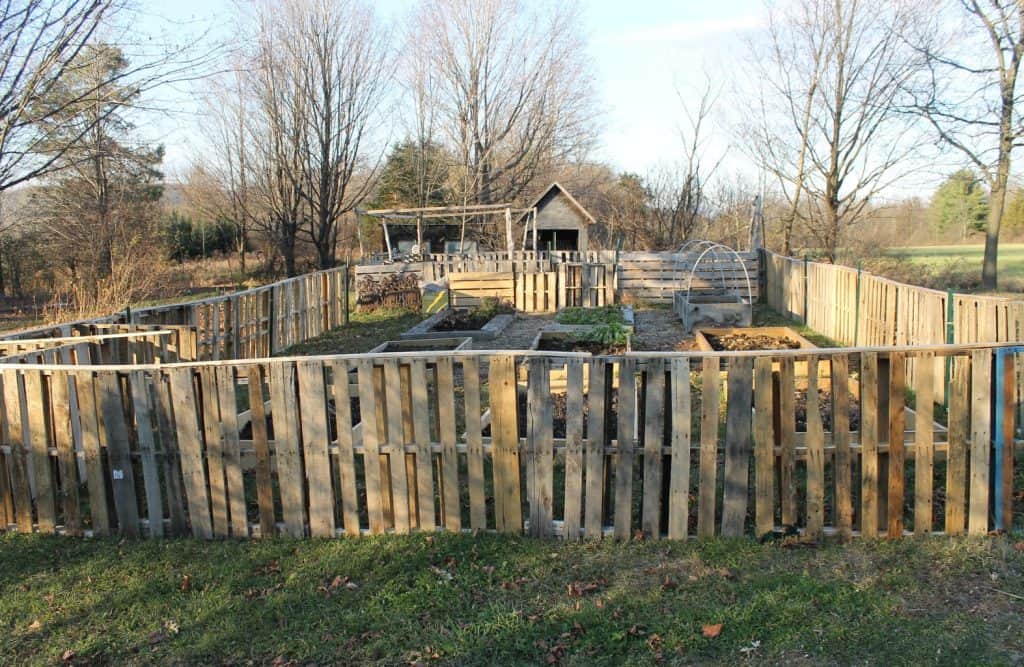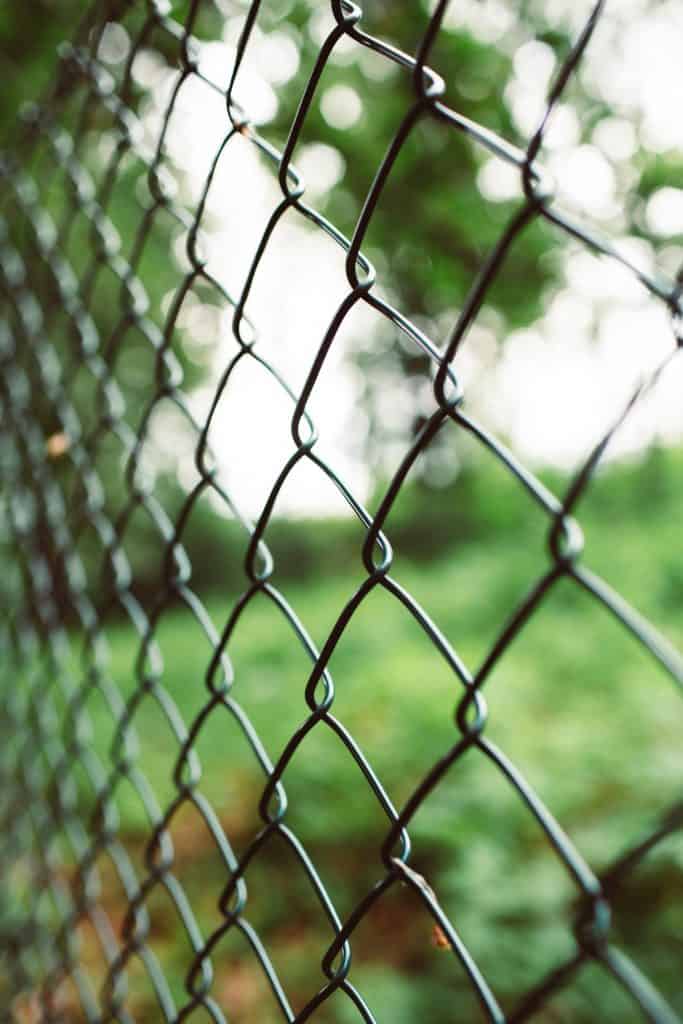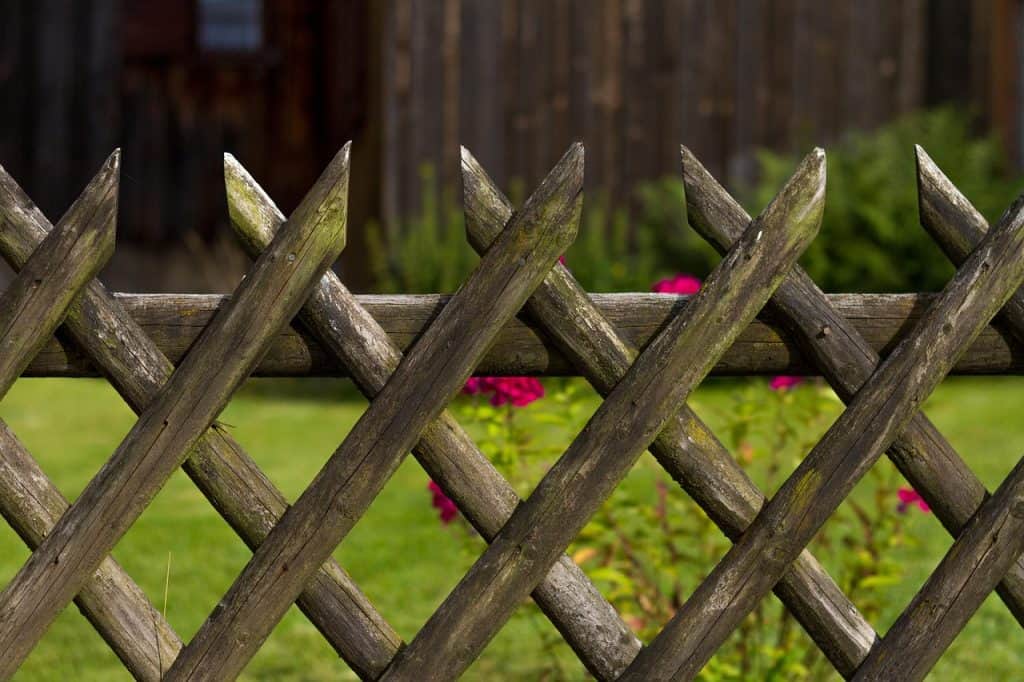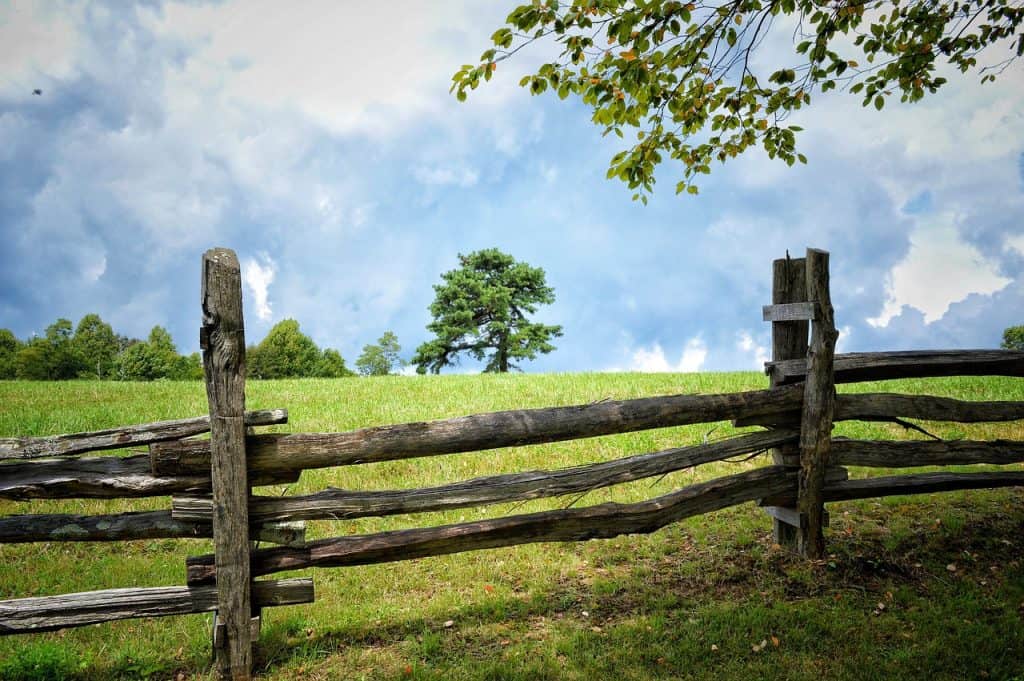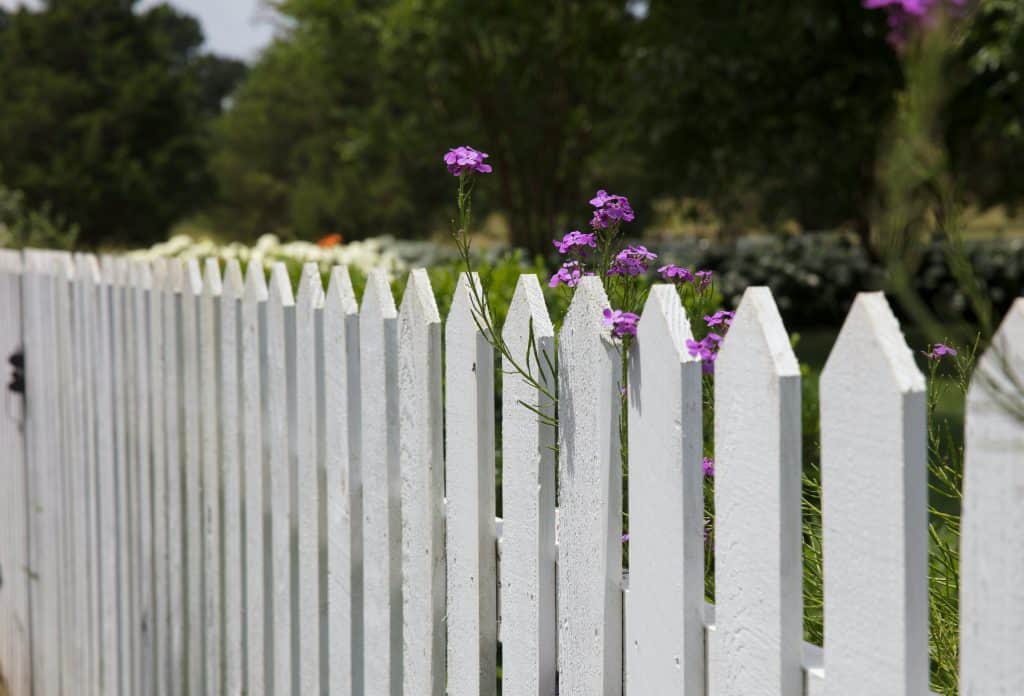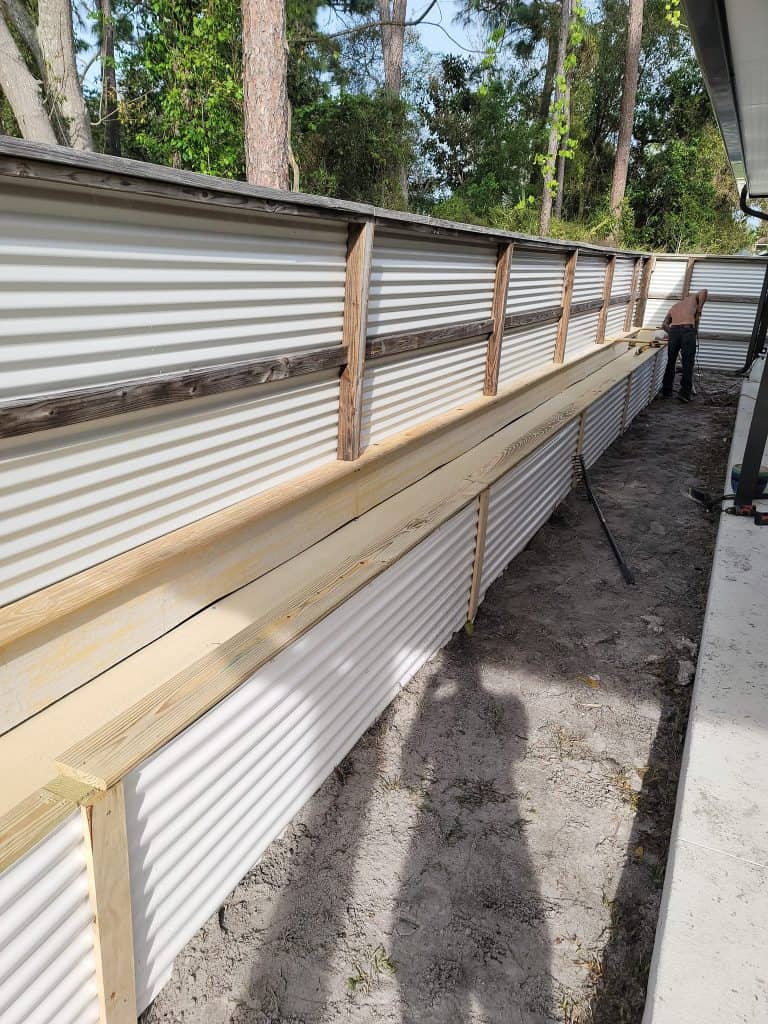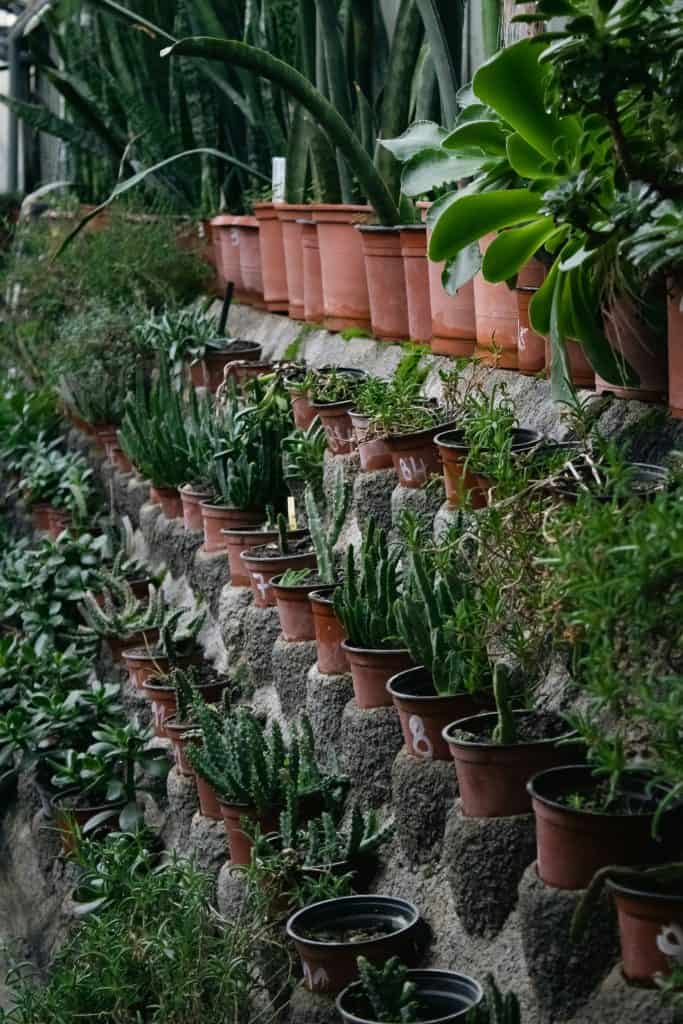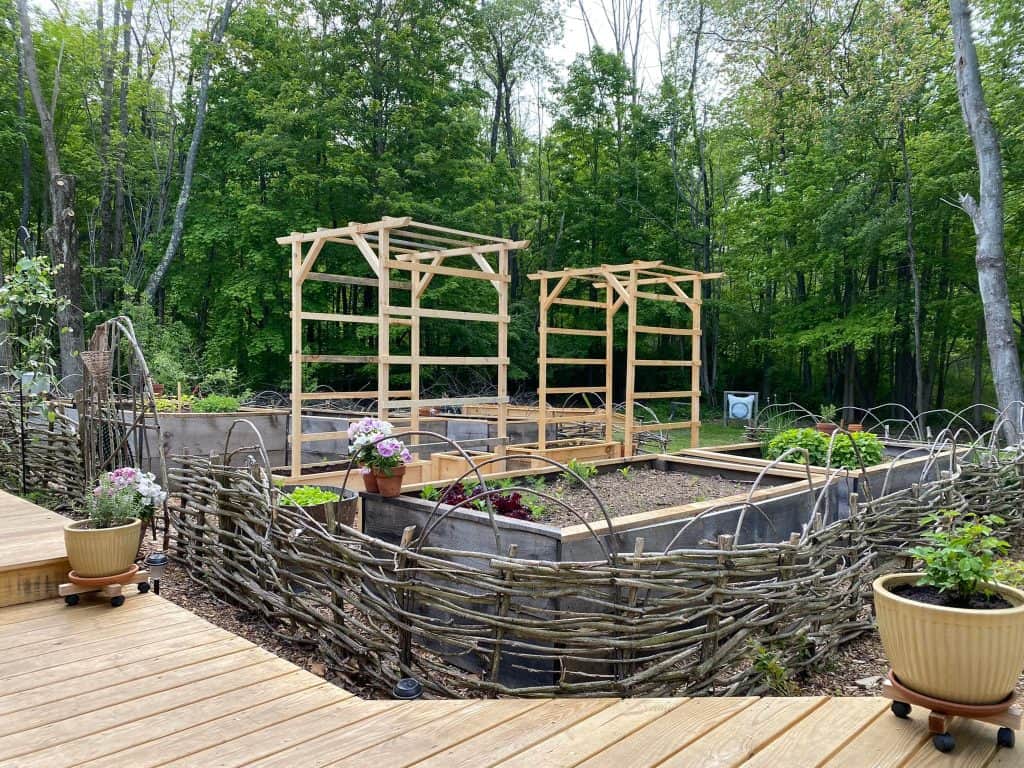Building a fence doesn’t have to drain your wallet (or your sanity).
Whether you’re trying to keep the dog in, the neighbors out, or just want something that makes your yard look more “put together,” there are loads of ways to fence a space on the cheap.
This article pulls together 12 solid DIY fence ideas that work across different budgets, skill levels, and purposes. Some cost literal dollars per foot. Others are all about what you can get for free and reuse.
If you're specifically looking to fence in your veggie patch or flower beds, check out these garden fence ideas for even more inspiration.
Things to Consider Before Building a DIY Fence
Before you dig, hammer, or zip-tie anything together, take a beat. Throwing up a DIY fence without thinking through a few key things?
That’s how you end up redoing it next season or, worse, taking it down because your neighbor called the city on you.
Let’s not do that.
1. Local Regulations
Every city (and nosey HOA) has its own set of rules about what kind of fence you can build, how tall it can be, and where it can go.
You don’t want to get halfway through building a beautiful pallet fence only to find out it’s too tall, too close to the property line, or just straight-up not allowed.
A quick check with your local building office saves a ton of hassle.
2. Why Are You Even Building This Fence?
It sounds obvious, but seriously – what’s the point of the fence? Privacy? Keeping pets in? Keeping deer out? Just want something that looks nice in your garden?
Your answer changes what materials make sense. A few rows of wire might be fine for livestock. But for privacy? Not so much.
3. Terrain and Soil
If your yard is flat and soft, congrats – you’ve got it easy. Sloped ground or rocky soil, though? That’s when things get tricky.
Some fences (like wattle or split rail) are way more forgiving on uneven ground. Others require serious leveling, digging, or cursing.
4. What Can You Actually Get Your Hands On?
A lot of cheap DIY fencing comes down to what materials you can source for little or nothing. Got a hookup for free pallets? Perfect.
Live near a farm supply store that discounts hog wire? Even better. No point planning an elaborate garden wall if you can’t even find the plants locally.
5. Maintenance and Longevity
Sure, untreated pine might be cheap today. But when it warps, cracks, or gets eaten alive by bugs in a year, you’re going to wish you’d paid a bit more for pressure-treated wood.
Some materials age gracefully (like metal or treated wood). Others… not so much.
6. Weather Realities
Is your yard a sunbaked, windy hilltop? Or does it turn into a swamp every time it rains? Materials react differently depending on exposure. Wood rots. Metal rusts. Even barbed wire can sag and fail if it’s not tensioned properly. Know your climate. Build accordingly.
7. Your Tools & Skills (Be Honest)
You don’t need to be a contractor to build most of these fences – but you do need to know what you’re comfortable with.
If your tool stash stops at a hammer and a roll of duct tape, maybe skip the electric fencing. Go with something simple and solid. No shame in keeping it easy.
12 DIY Cheap Fence Ideas You Can Build
Fences don’t have to be fancy or expensive to do the job. Sometimes you just need something simple, sturdy, and maybe even a little scrappy (in a good way).
Whether you're working with pallets, branches, or leftover wire, there are plenty of creative ways to build a fence without spending a ton.
Here are a few DIY fence ideas that are easy on the wallet and full of character.
1. Pallet Fence
Pallets are everywhere. Warehouses, grocery stores, hardware stores—just ask around, and you’ll probably find a stack they’re happy to give away.
The trick? Make sure they’re safe. Look for the IPPC stamp, which means they’ve been heat-treated (not chemically fumigated).
The build itself is beginner-friendly. You can line them up vertically, link them together horizontally, or even take them apart and create a custom slat design if you’re feeling ambitious. Add some paint or stain, and suddenly it’s way more than just “free wood.”
But keep in mind – while the pallets might cost nothing, you’ll still need posts, fasteners, screws, and maybe concrete or gravel for stability. Still, for how cheap (and customizable) it is, this one’s a winner.
2. Chain Link Fence
It’s not glamorous. But it gets the job done.
Chain link is one of the most affordable ways to cover a lot of ground fast. Especially if you’ve got pets, kids, or just need to define a space without blocking the view.
You’re usually looking at $15 to $30 per linear foot, depending on height and whether you install it yourself or get some help.
Installation is mostly about digging and tensioning. Nothing fancy. If you can use pliers and a post hole digger, you can probably handle this.
Yes, it’s plain. So paint it a matte green or black, then plant vines like clematis, jasmine, or ivy nearby. In a season or two, the whole thing can disappear under greenery. Problem solved.
Chain link lasts a long time, too. Decades, really. Especially if you buy coated wire and keep it clear of debris and weeds.
Not pretty out of the box, but surprisingly adaptable.
3. Barbed Wire Fence
You’ve probably seen this one before – just maybe not in anyone’s suburban backyard.
Barbed wire fencing is basic, effective, and incredibly cheap. We’re talking $1 to $6 per foot. That’s about as low as it gets for something that can cover big spaces and keep animals where they belong.
It’s a rural solution, no doubt. Most places won’t allow barbed wire in neighborhoods, and it’s not exactly toddler-friendly. But if you’re fencing a pasture, wooded lot, or large garden space? It works.
You’ll need posts (wood or steel), a spool of wire, and something to tension it properly. Three to five strands is standard.
No, it’s not pretty. But it’s fast to install, easy to maintain, and very effective for certain jobs. Just make sure it’s legal where you live before you start stringing it up.
4. Crossbuck Fence
This one’s got a classic look – like something you’d see lining a country driveway or marking the edge of a tidy pasture.
A crossbuck fence is built with horizontal rails and angled boards that form an “X” in each panel. It's strong, sturdy, and has a nice old-school charm to it.
It’s not the simplest design to build (those angled cuts take a bit of patience), but it’s totally doable if you’re comfortable with a saw and level.
You’ll be setting posts, cutting boards at an angle, and making sure everything lines up right. Not a beginner project, but not a contractor-only job either.
Why pick this style? It’s solid. It holds up well. And it just looks good. Use it to fence in a front yard, pasture, garden, or driveway. Paint it white for a farmhouse feel or leave it natural and let the wood age gracefully.
Good for: Horses, gardens, driveways, or anywhere you want something functional that also turns heads.
5. Hog Wire Fence
Hog wire might be the most underappreciated fence material out there.
It’s made of heavy-duty metal grids originally designed to contain, well… hogs. But add a wood frame around it? Suddenly, it looks modern, sturdy, and intentional.
The panels come in standard sizes and can be mounted horizontally or vertically. Pair them with cedar, pine, or pressure-treated posts, and you’ve got a fence that balances open visibility with a defined boundary.
Gardeners love this stuff because it doubles as a trellis. Tomatoes, cucumbers, or climbing flowers will happily take over. You get beauty, function, and structure all in one.
Costs range from $6.50 to $15.50 per foot, depending on wood choices and whether you build custom frames.
It’s also a smart option on sloped or uneven terrain, where solid panels might be tricky.
6. Treated Pine Fence
If you’re craving the look of a solid wood fence but not the price of cedar, treated pine is a solid middle ground.
Pressure-treated pine is designed to resist rot, pests, and moisture – and it's way cheaper than naturally durable woods. Prices start around $18.50 per foot, which might sound steep at first… until you compare it to redwood or ipe.
But – and this is a big one – handpick your boards. Treated pine can twist, crack, or warp if it’s not dried properly or if it’s stored poorly at the lumber yard.
Keep it simple. Go with a vertical board design, use galvanized screws or nails, and seal it once it’s fully dry. Done right, it can last well over a decade.
7. Split Rail Fence
It’s old-fashioned in the best way.
Split rail fences use minimal material – just long, roughly cut rails slotted into upright posts. That’s it. No nails. No gates. Just an open, breathable structure that outlines your space without making it feel boxed in.
They work especially well on larger plots, farms, or wooded areas. But even in a big backyard, they can add charm and help subtly divide space.
They’re also fast to install. With no panels to line up and no screws to drive, you can knock out long sections quickly. Expect to pay around $15 to $25 per foot, depending on wood type and rail length.
Just know it won’t stop anything determined to climb or crawl under it.
8. Picket Fence
Timeless. Cozy. A little nostalgic.
Picket fences are still one of the most affordable “real fence” options especially when you go with flat-top pickets, basic spacing, and no frills. You can buy pre-cut panels or build it piece by piece.
Keep the design simple, and you can get it down to $10–$20 per foot. Want more flair? Expect that number to climb.
These fences are perfect for front yards, garden borders, or wrapping around porches and patios. They offer just enough structure without cutting off sightlines.
Paint it white, stain it natural, or let it weather into a silvery gray. You’ve got options.
9. Corrugated Metal Fence
For privacy with a bold twist, corrugated metal is shockingly effective.
These wavy, galvanized panels are lightweight, weatherproof, and easy to attach to a simple frame. You can go vertical or horizontal. Add wood trim for contrast. Even mix materials if you’re feeling fancy.
They’re not the cheapest upfront (expect $17 per foot and up) but they last forever. And if you can score used or surplus sheets? Way cheaper.
They’re also great in areas with wind or intense sun. Metal reflects heat, sheds rain, and doesn’t get eaten by bugs. Win-win-win.
Just wear gloves. That stuff is sharp on the edges.
10. Potted Plants as Fencing
Think of this one as a green suggestion rather than a hard barrier.
Lining up potted plants, shrubs, or small trees along a pathway or yard edge can create the illusion of a fence – without building a thing. It won’t stop a raccoon. But it does offer privacy, color, and structure.
The trick is in the containers. Use upcycled crates, buckets, or pallet-made boxes to keep costs down. And pick plants that grow upright and dense: bamboo, arborvitae, even tall ornamental grasses.
It’s flexible. Move them. Swap them out. Change the look with the seasons.
Starting cost is around $25 per foot, but it’s all in the scale and spacing.
11. Garden Wall (Living Fence)
This is where function meets food.
Using fencing as a base, you can grow a vertical wall of plants – beans, peas, cucumbers, flowering vines. The structure could be chain link, hog wire, or even a simple trellis setup.
Layer in hanging planters or repurposed gutters, and suddenly your fence is a garden.
It takes time to fill in, and you’ll be replanting each season. But for DIYers who like dirt under their nails, it’s incredibly rewarding.
Expect to spend around $15 per foot, depending on your plant choices.
12. Wattle Fence
The oldest idea on the list… and still one of the coolest.
Wattle fences are made by weaving long, flexible branches between upright stakes. It’s ancient. It’s beautiful. And it’s almost completely free if you’ve got access to willow, hazel, or similar woods.
You don’t need power tools – just patience and rhythm. And the end result looks handcrafted and earthy in the best way.
It’s not the strongest option, but for gardens, pathways, or decorative borders, it’s a low-cost, high-charm win.
And honestly? Kind of therapeutic to build.
Fence Goals on a Budget
So yeah – fencing doesn’t have to be expensive. Or complicated. Or cookie-cutter.
There’s a weird amount of satisfaction in building something that does the job and didn’t cost you half a paycheck. Especially when it actually looks good.
Whether you're leaning toward a classic picket, scouring Craigslist for pallets, or eyeing those stackable buckets for a plant wall – there's a cheap DIY fence idea that fits.
And the good part is you end up with something that’s yours. Built by your hands, tailored to your yard, and totally different from what your neighbor bought at the big box store.
Pick the idea that fits your needs, grab the tools you've got, and start sketching out your space. Even a humble fence can change how your whole place feels.
(Just, you know, check the zoning laws first.)
Frequently Asked Questions (FAQs)
Got questions before you start building? Totally fair. DIY fences can be simple, but there are a few things worth knowing before you start digging holes or hunting down pallets.
1. How do I find free or low-cost fence materials?
Start local. Check with hardware stores, warehouses, and landscaping suppliers for leftover pallets or scrap materials. Craigslist, Facebook Marketplace, and even neighborhood apps like Nextdoor are goldmines for giveaways. People are constantly offloading extra lumber, wire rolls, or panels – they just want it gone.
2. Which DIY fence type offers the best privacy?
If privacy is the goal, you want something solid or densely filled. Corrugated metal, treated pine panels, and vertical garden walls all block sight lines effectively. Chain link or hog wire won’t cut it unless you add vines or cover them with slats.
3. Can I build a fence without concrete?
Absolutely. For lighter fences like picket, pallet, or split rail, tamped gravel around the post base works well and helps with drainage.
You can also use steel post spikes that drive directly into the ground. Just skip concrete if your soil holds a lot of moisture – it can actually trap water and rot the post faster.
4. How long do cheap DIY fences typically last?
Depends on the materials. A well-built treated wood fence can last 10–15 years. Chain link? Easily 20 or more. Barbed wire and electric setups last a long time with basic upkeep.
But stuff like wattle or untreated pallet fences will break down sooner – especially in wet or windy conditions. Still, not bad for what you paid.
5. Are there fence types I should avoid in wet climates?
Yes – avoid raw, untreated wood unless you really like replacing boards. Go with pressure-treated lumber, metal, or plastic-coated materials.
And keep everything off the ground by at least an inch if you can. Wet feet = early death for wood fences.
Ready To Transform Your Garden?
Are you looking for the best way to layout your garden beds? Maybe you're feeling a bit stuck on how to make the most of your space?
We’ve got you covered! Check out our 101+ Garden Bed Layout Ideas for your next raised bed project. This guide is filled with creative and practical ideas that can help you design a garden that fits your style, whether you’re just starting out or have been gardening for years.
Get your copy today and get inspired to bring your gardening dreams to life.

